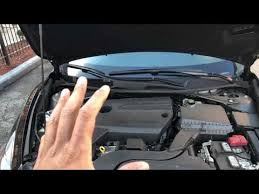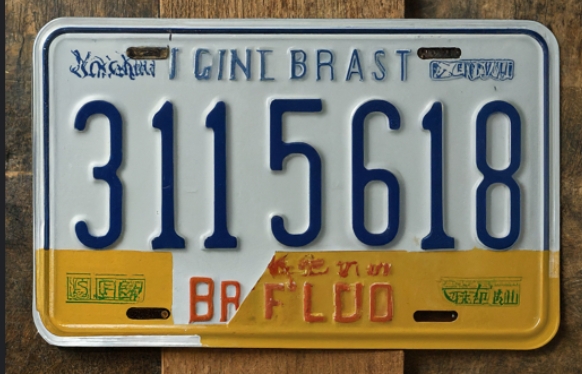Unveiling Brake Fluid: Ensuring Safety in the 2010 Nissan Altima
In the world of midsize sedans, the Nissan Altima has carved out a niche for itself, offering a blend of performance, comfort, and reliability. Among the various components that contribute to its safety and performance, brake fluid plays a crucial role. In this blog, we’ll explore everything you need to know about brake fluid for the 2010 Nissan Altima, including its function, types, maintenance tips, common issues, and replacement guidelines, to ensure your Altima’s braking system operates at its best, keeping you safe on the road.
Understanding Brake Fluid in the 2010 Nissan Altima
Function:
Brake fluid is a hydraulic fluid that transmits the force of the brake pedal to the brake calipers or wheel cylinders, allowing the brakes to engage and slow down or stop the vehicle. It operates under high pressure and temperature conditions to ensure reliable braking performance and safety.
Types of Brake Fluid
DOT 3:
DOT 3 brake fluid is a glycol-based fluid commonly used in older vehicles, including the 2010 Nissan Altima. It has a lower boiling point compared to DOT 4 and DOT 5.1 fluids and requires more frequent replacement.
DOT 4:
DOT 4 brake fluid is a glycol-based fluid with a higher boiling point than DOT 3 fluid, making it suitable for more demanding driving conditions. It is compatible with most brake systems and offers improved performance and longevity.
DOT 5.1:
DOT 5.1 brake fluid is a glycol-based fluid with an even higher boiling point than DOT 4 fluid, making it ideal for high-performance and heavy-duty applications. It is compatible with most brake systems and offers superior performance under extreme conditions.
Common Issues with Brake Fluid
Contamination:
Brake fluid can become contaminated with moisture, dirt, debris, or air over time, leading to decreased braking performance, corrosion of brake components, and potential brake system failure.
Boiling Point:
Brake fluid has a limited boiling point, and when it exceeds this temperature, it can vaporize and form air bubbles in the brake lines, resulting in spongy or ineffective braking and increased stopping distances.
Degradation:
Brake fluid degrades over time due to exposure to heat, moisture, and contaminants, leading to reduced effectiveness and potential damage to brake components such as seals, hoses, and calipers.
Maintenance Tips for Brake Fluid
Regular Inspections:
Inspect the brake fluid reservoir and brake lines regularly for signs of leaks, corrosion, or contamination. Check the fluid level and color, ensuring it is clear and free of debris or discoloration.
Fluid Flush:
Flush and replace the brake fluid according to the manufacturer’s recommended intervals, typically every 2-3 years or as specified in the vehicle owner’s manual. Use the appropriate type of brake fluid recommended for your 2010 Nissan Altima.
Brake System Bleeding:
Bleed the brake system periodically to remove air bubbles and ensure proper hydraulic pressure. Follow the manufacturer’s recommended procedure and use a brake bleeder kit or consult a professional mechanic for assistance.
Replacement Guidelines for Brake Fluid
Signs for Replacement:
Replace the brake fluid in your 2010 Nissan Altima if you notice any of the following signs:
- Dark or discolored fluid in the reservoir
- Contaminants or debris visible in the fluid
- Spongy or soft brake pedal feel
- Increased stopping distances or reduced braking performance
Replacement Procedure:
- Prepare the Vehicle: Park your Nissan Altima on a level surface and engage the parking brake. Open the hood and locate the brake fluid reservoir near the firewall on the driver’s side of the engine compartment.
- Remove the Old Fluid: Use a turkey baster or syringe to remove the old brake fluid from the reservoir. Be careful not to spill any fluid on painted surfaces, as it can cause damage.
- Refill with New Fluid: Fill the reservoir with fresh brake fluid of the appropriate type, up to the maximum fill line. Use a funnel to prevent spills and ensure accuracy.
- Bleed the Brake System: Follow the manufacturer’s recommended procedure to bleed the brake system and remove any air bubbles. Start with the brake furthest from the master cylinder (usually the rear passenger side) and work your way towards the front.
- Test the Brakes: Once bleeding is complete, test the brakes to ensure proper operation and pedal feel. Pump the brake pedal several times to build pressure, then apply firm pressure to test for sponginess or inconsistency.
- Dispose of Old Fluid: Properly dispose of the old brake fluid in accordance with local regulations and environmental guidelines. Many auto parts stores and service centers offer recycling programs for used fluids.
Conclusion
Brake fluid is a critical component of the braking system in the 2010 Nissan Altima, ensuring reliable stopping power and safety on the road. By understanding its function, recognizing common issues, following proper maintenance guidelines, and knowing when to replace it, you can ensure that your Altima’s braking system operates at its best, keeping you and your passengers safe on every journey. Regular inspections, fluid flushes, bleeding, and timely replacement of worn or contaminated fluid are key to maintaining optimal braking performance and enjoying the full benefits of your Nissan Altima’s safety features.




Post Comment